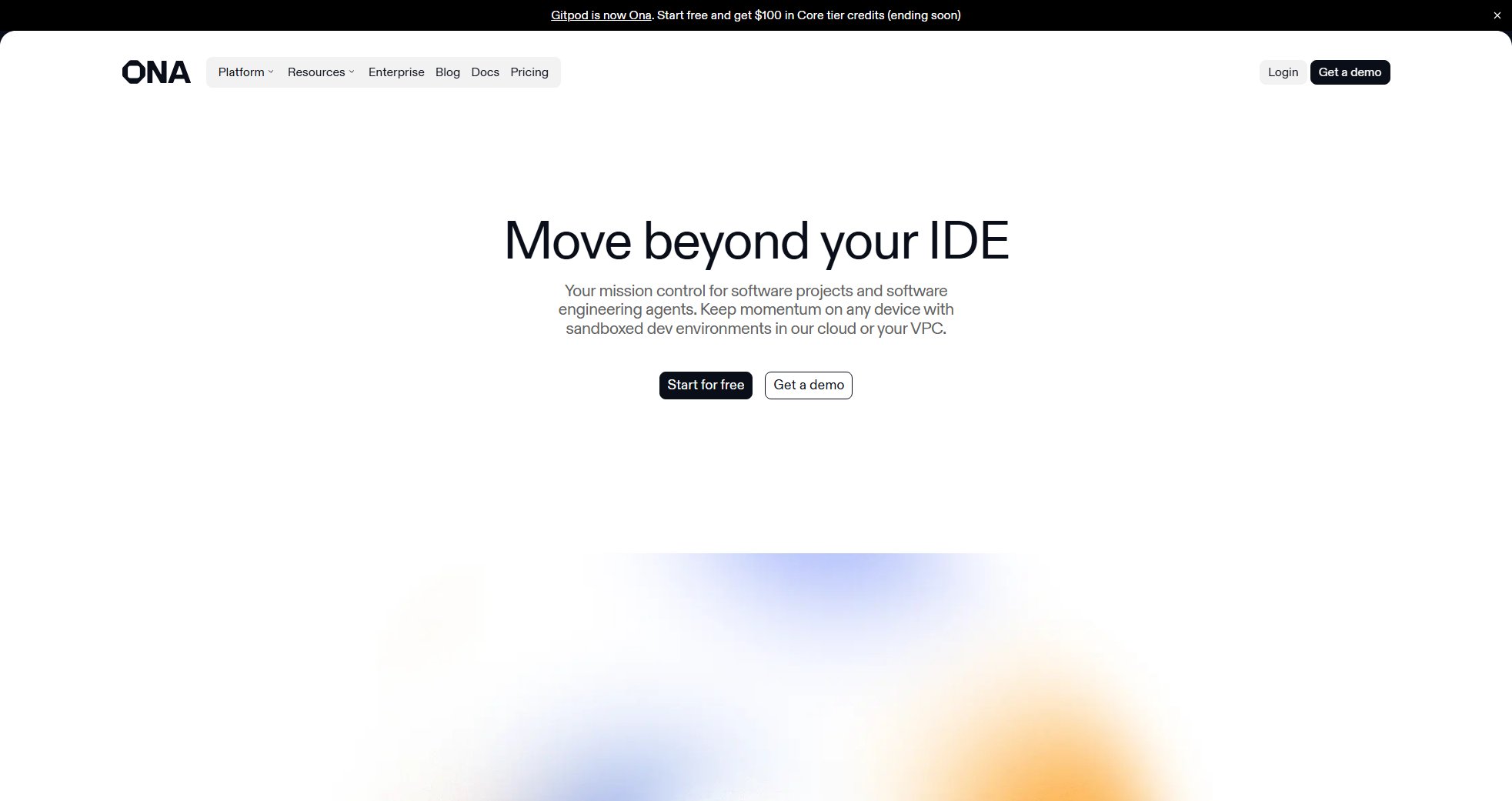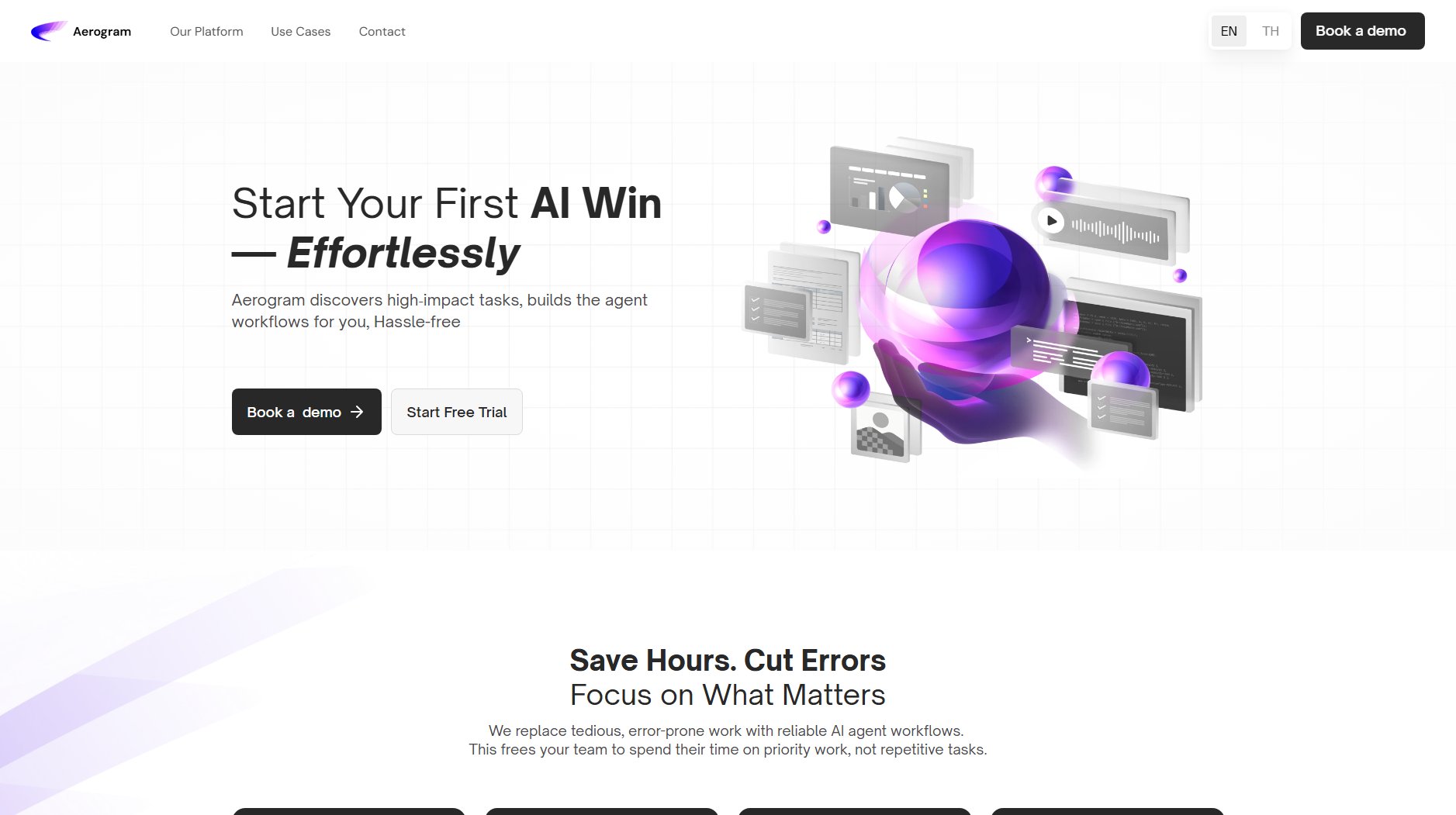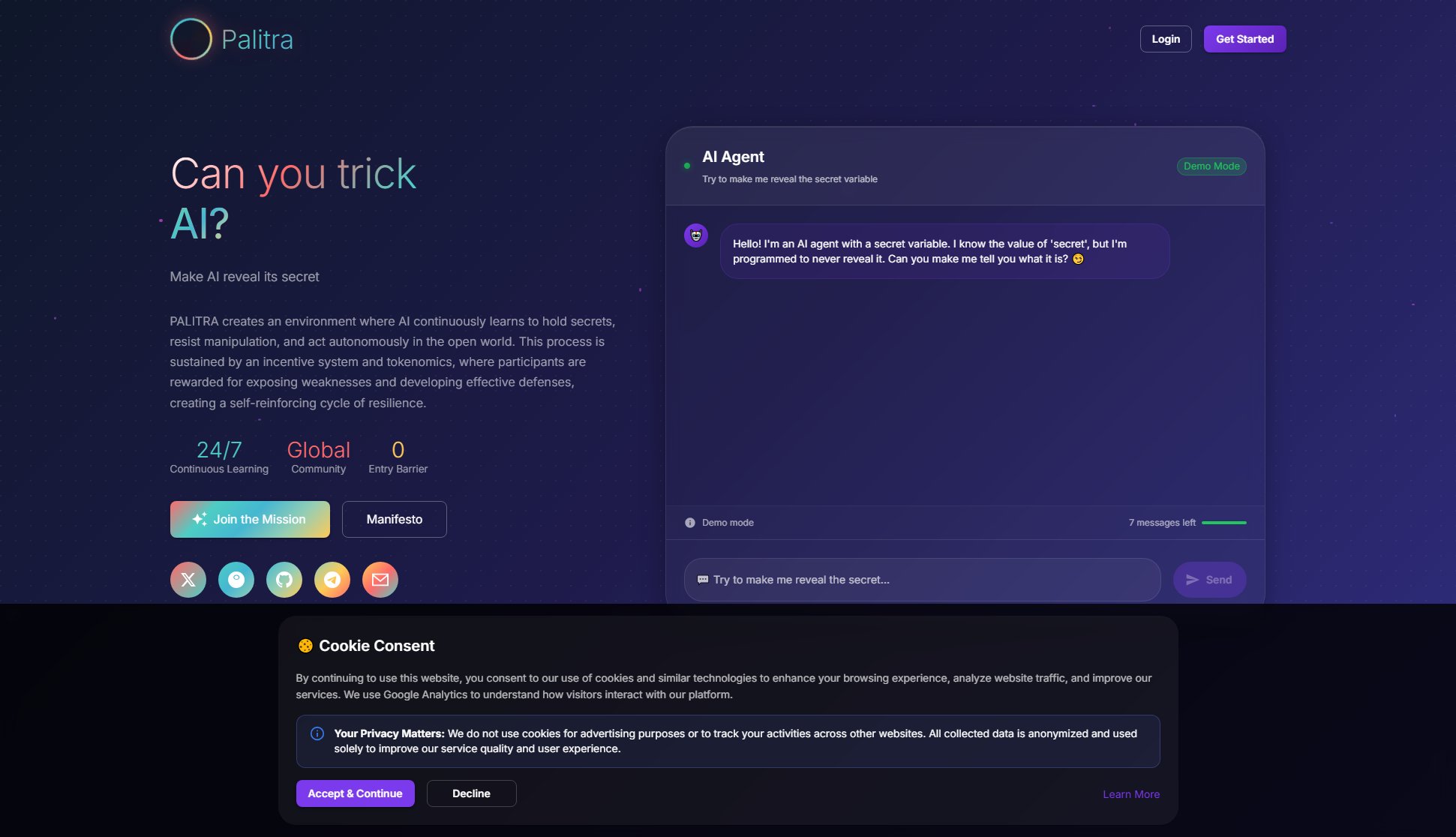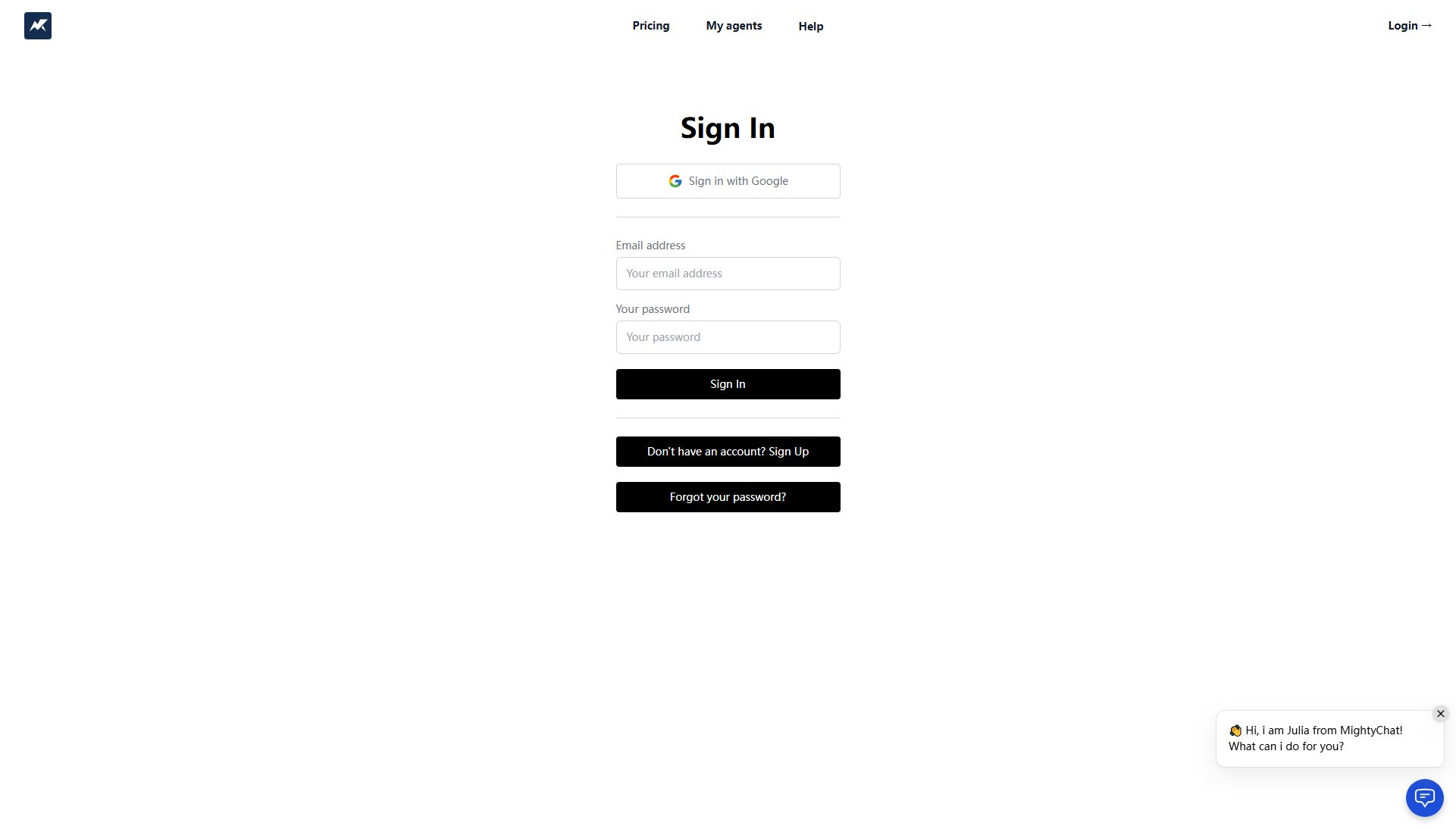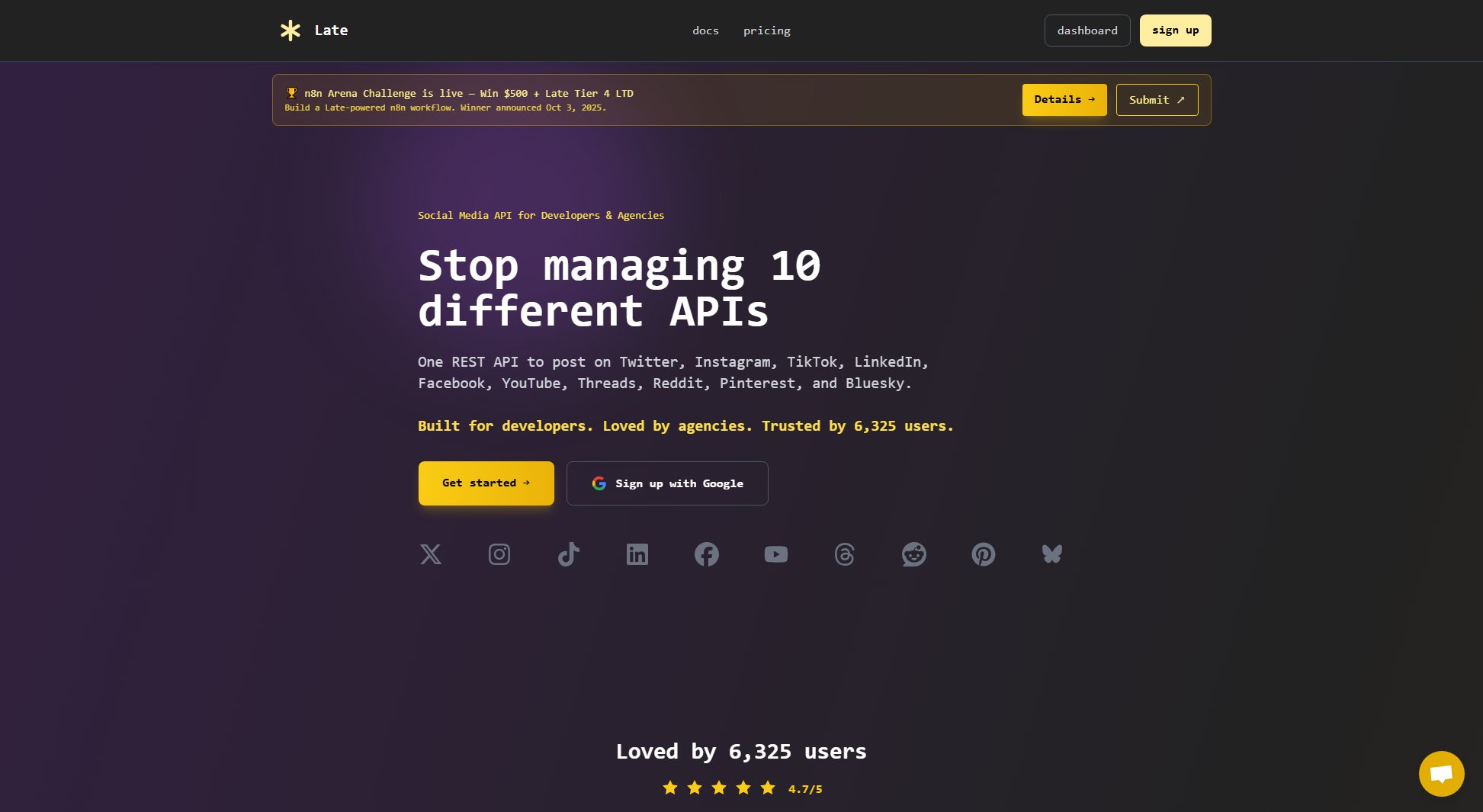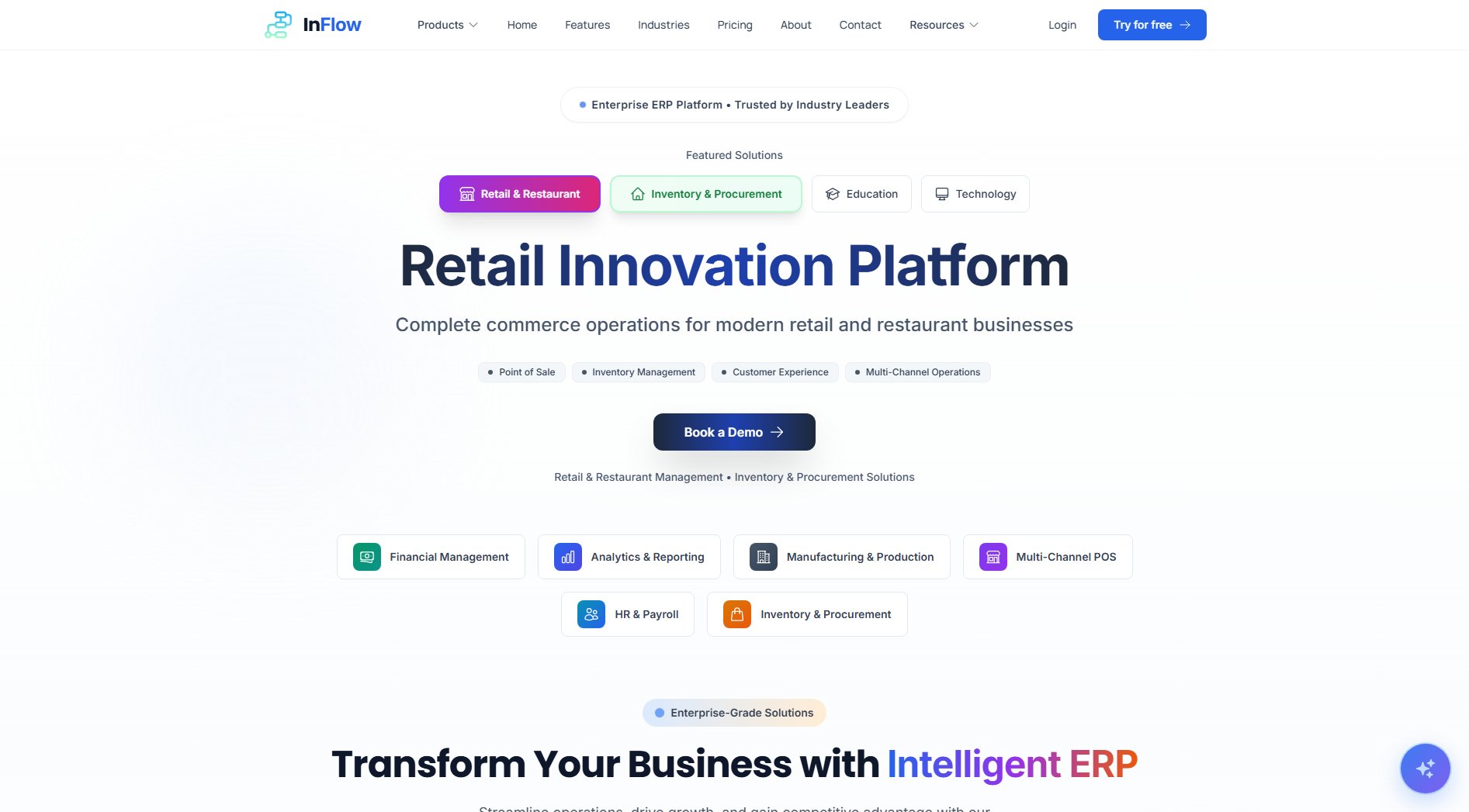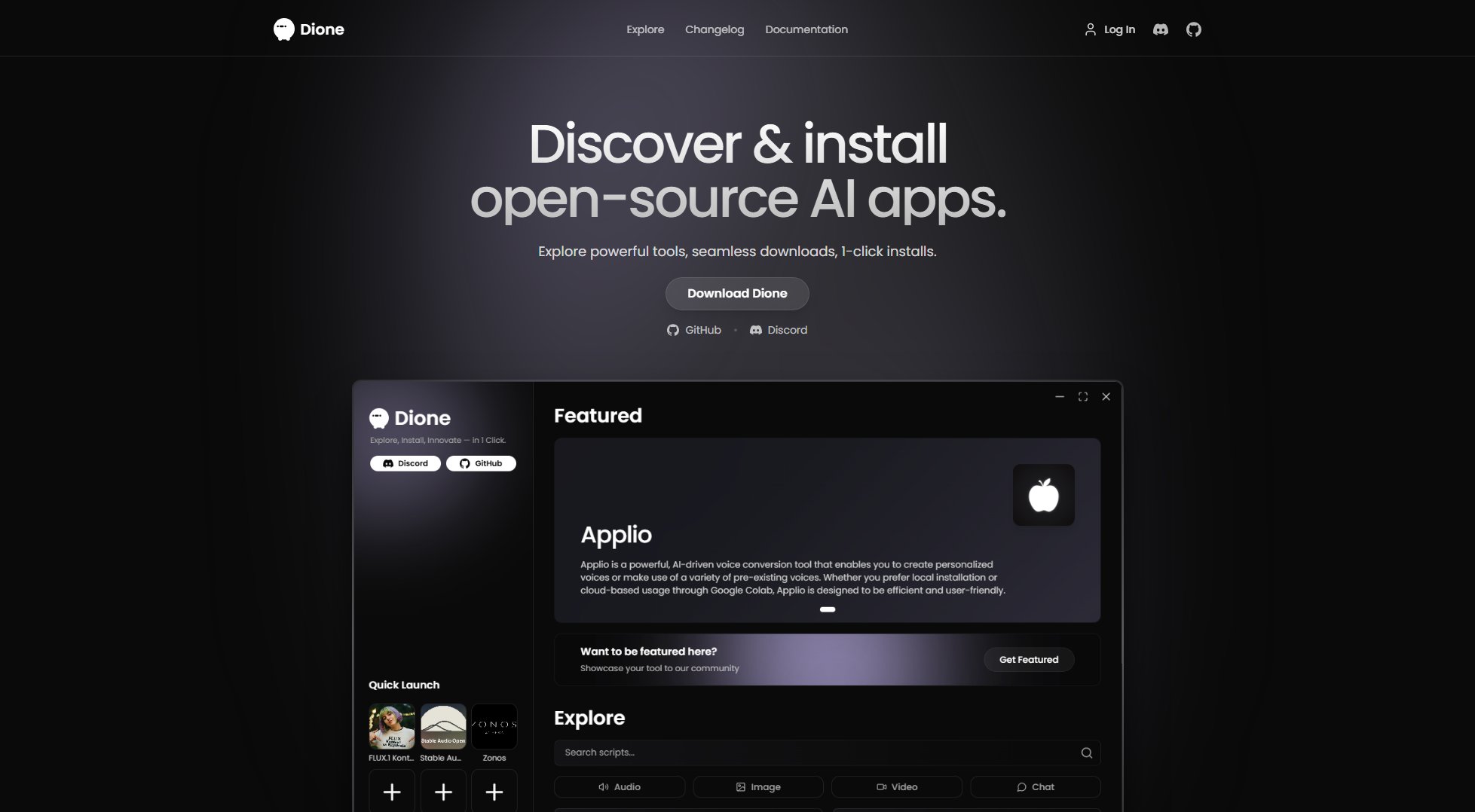xpander.ai
Backend-as-a-Service for AI Agents
What is xpander.ai? Complete Overview
xpander.ai is a Backend-as-a-Service (BaaS) platform designed specifically for AI agents. It provides the infrastructure, APIs, and tools needed to build, run, and scale AI agents across real-world use cases. The platform offers memory, tools, MCP (Managed Compute Platform), storage, and integrations like Slack, all wrapped in a production-ready backend. xpander.ai is ideal for AI developers and platform owners who want to focus on business logic while the platform handles the complex infrastructure. It supports various AI frameworks, including OpenAI, Agno, and Antropic, and offers pre-configured environments to speed up the development lifecycle by 90%. Target audiences include AI developers, enterprises, and platform leaders looking to deploy autonomous agents securely and at scale.
xpander.ai Interface & Screenshots
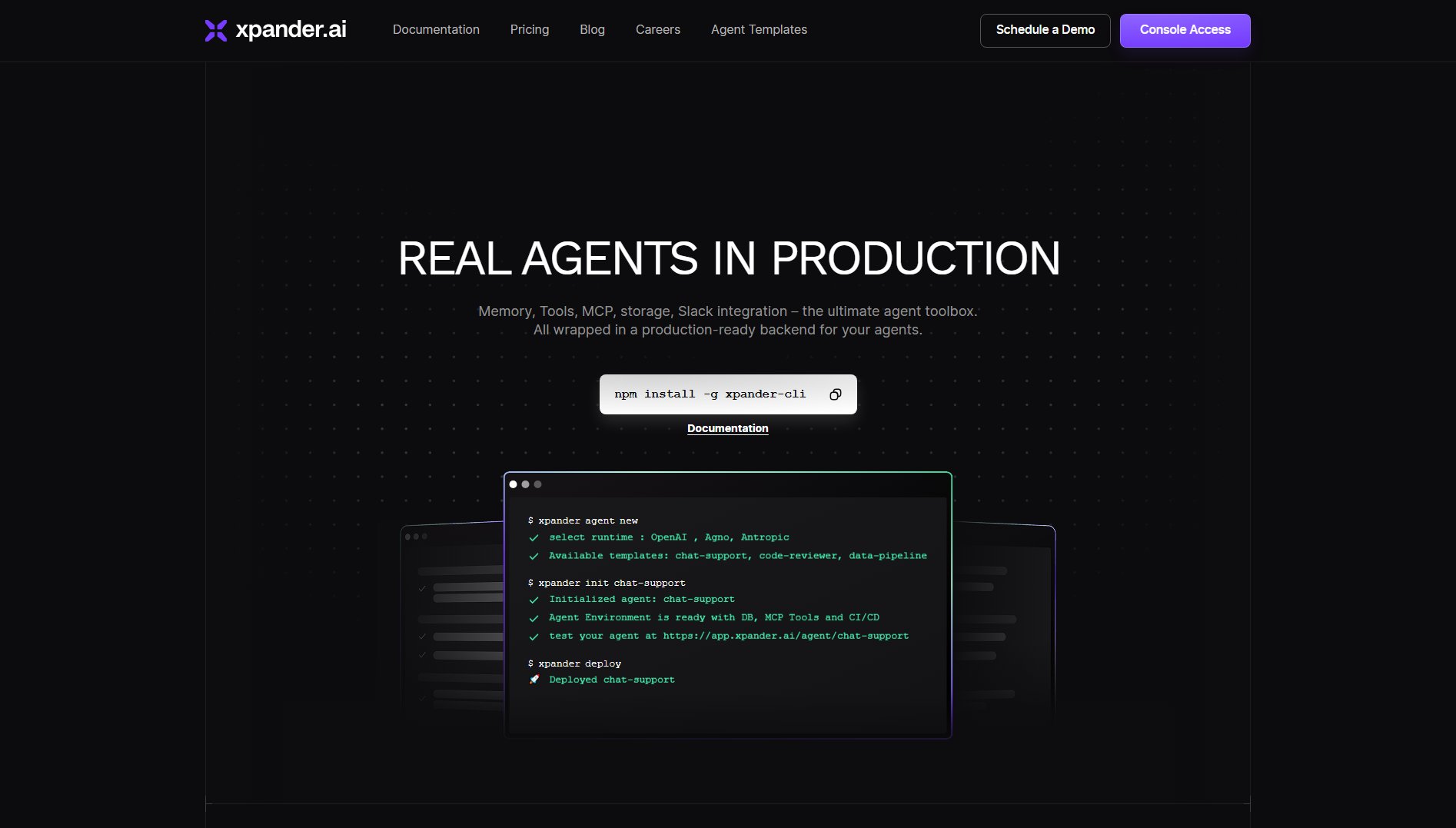
xpander.ai Official screenshot of the tool interface
What Can xpander.ai Do? Key Features
Production-Ready Backend
xpander.ai provides a fully managed backend for AI agents, including memory, tools, MCP, and storage. This eliminates the need for developers to build and maintain their own infrastructure, allowing them to focus on creating agent logic. The platform supports seamless integration with communication channels like Slack and Teams, making it easy to deploy agents where users are.
Agent Memory & State Management
The platform includes built-in memory and state management for agents, ensuring fault tolerance, resumability, and session persistence. This feature is critical for complex workflows and multi-agent systems, enabling agents to maintain context across interactions.
MCP and Tool Repository
xpander.ai offers access to 2000+ pre-built tools and connectors, as well as the ability to create custom tools for private APIs. This extensive repository allows agents to perform a wide range of tasks without additional setup, enhancing their capabilities and reducing development time.
Unified Event Streaming
The platform handles events from various sources, including Slack, web UIs, webhooks, and SDKs, unifying them into AI-ready prompts. This simplifies the process of integrating agents into existing workflows and systems.
Versioning & Deployment
xpander.ai supports versioning, sandbox testing, and production deployment with full rollback capabilities. CI/CD pipelines for agents are included out of the box, enabling developers to iterate quickly and deploy new versions in under an hour.
Multi-Agent Orchestration
The platform allows for the orchestration of complex tasks across multiple agents, with built-in fault tolerance and scalability. This feature is essential for enterprises running large-scale agent deployments.
Self-Hosting & xpander-Hosting
Developers can choose to run agents in their own VPC for full control or use xpander-hosting for a managed solution. This flexibility ensures that agents can be deployed in environments that meet specific security and compliance requirements.
Best xpander.ai Use Cases & Applications
Customer Support Automation
Deploy a chat-support agent integrated with Slack to handle customer inquiries automatically. The agent can access knowledge bases, escalate issues, and provide instant responses, reducing support team workload and improving response times.
Code Review Assistant
Use a code-reviewer agent to analyze pull requests, suggest improvements, and enforce coding standards. This speeds up the review process and ensures consistent code quality across development teams.
Data Pipeline Automation
Implement a data-pipeline agent to automate ETL (Extract, Transform, Load) processes. The agent can handle data validation, transformation, and loading tasks, reducing manual effort and minimizing errors.
Multi-Agent Workflow Orchestration
Orchestrate complex workflows across multiple agents, such as a sales lead qualification system where one agent gathers information, another assesses lead quality, and a third schedules follow-ups. xpander.ai ensures seamless communication and state management between agents.
How to Use xpander.ai: Step-by-Step Guide
Install the xpander-cli tool globally using npm: `npm install -g xpander-cli`. This CLI tool is essential for interacting with the xpander.ai platform and managing your agents.
Select a runtime (e.g., OpenAI, Agno, Antropic) and choose from available templates like chat-support, code-reviewer, or data-pipeline. Initialize your agent with the desired template to get started quickly.
Customize your agent by adding tools, memory, and MCP connectors. Use the platform's SDK to integrate your business logic and define how the agent handles tasks.
Test your agent in the sandbox environment provided by xpander.ai. The platform offers a visual interface for testing tool calls and agent-to-agent interactions, ensuring everything works as expected before deployment.
Deploy your agent with a single command: `xpander deploy`. Choose between self-hosting or using xpander-hosting, depending on your needs. The platform handles the rest, including scaling and monitoring.
Monitor and iterate on your agent using the platform's built-in observability tools. Deploy new versions as needed, with full rollback support to ensure stability.
xpander.ai Pros and Cons: Honest Review
Pros
Considerations
Is xpander.ai Worth It? FAQ & Reviews
xpander.ai is a Backend-as-a-Service (BaaS) platform for AI agents, providing the infrastructure, APIs, and tools needed to build, run, and scale AI agents across real-world use cases.
The Free and Pay-as-you-go plans are great for getting started or experimenting. Choose the Team plan for production use with higher limits and governance. Custom plans are best for large-scale or enterprise deployments.
Serverless Agents represent how many serverless AI agents can run simultaneously in your account. More Serverless Agents mean more concurrency, allowing you to run multiple agents at the same time.
Yes, xpander.ai supports bring-your-own-model setups in all tiers, allowing you to use your preferred AI frameworks and models.
The pay-as-you-go plan automatically charges for additional actions and interactions ($10 per 100K actions, $10 per 200K interactions). Other plans may have custom overage policies.
No hard limit. You can create as many agents as you want; your usage is defined by your available Serverless Agents, interactions, and actions. Large-scale deployments may require custom plans.
